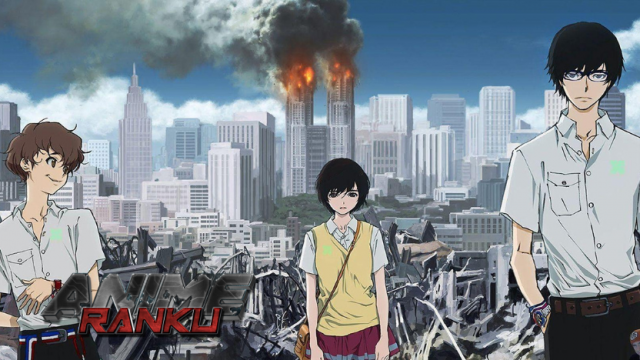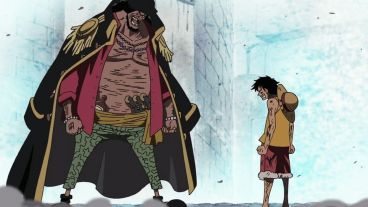Terror in Resonance, a 2014 MAPPA production, was directed by Shinichiro Watanabe of Cowboy Bebop and featured music by collaborator Yoko Kanno and character design by Kazuto Nakazawa of Kill Bill: Vol. 1. The anime's seasoned creators didn't let us down; nine years later, the series still holds up as a top-notch watch with a moving narrative, a sympathetic cast of young people, and timely themes that investigate technology dystopia and the grief of the Japanese war.
Terror in Resonance, which takes place in or around the same year that it was published, is about a string of terrorist assaults carried out by two 17-year-olds who identify as "Sphinx." Sphinx plants multiple bombs throughout Tokyo, taunting the police with wordplay and hints in the hope that the military will discover and deactivate them. The first person to recognize a connection between the clues and the locations of the attacks is ex-detective Shibazaki, who has been hired to work on the case. He pieces together an unsettling puzzle that leads him to unearth a horrifying government project. As the secret gradually comes to light, the weight of Japan's defeat in World War II and the horror of the atomic bomb come back with frightening power as the unbreakable legacy of modern Japan's ancestors.
The Children Are Compensated for the Fathers' Sins

The youthful members of Sphinx have no names; they go by test numbers Nine and Twelve, like captives in concentration camps. Nine, a cold-blooded and intensely focused individual, is the brains behind the terrorist plot, while Twelve helps him out with his warmer nature and physical prowess. They are attempting to uncover the government project that used them as test subjects for the creation of highly clever agents while they were four-year-old orphans, haunted by memories of their past. They were kept in a facility as youngsters and given an experimental medicine that would increase their IQ, with no consideration for their age or susceptibility. Twelve and Nine were the only ones to flee, making three of them the only survivors.
Dr. Mamiya, the mind behind the project, is eerily calm as he justifies his actions as Japan’s way to rear its head after the humiliations of WWII. Terror in Resonance’s villains are the war generation -- a decrepit group of dying men who used to lead the country and sacrificed the younger generation for their own dreams of dominance. In the anime, parents are either absent or unfit, symbolizing Japan’s abandonment or disregard of its children, left to fend for themselves. Inevitably, the sins of the fathers fall on their children’s shoulders, presenting them with a cold, unforgiving world where technological advancement has replaced warmth, affection and meaning.
Offering a significant deviation from the thesis, detective Shibazaki is a bridge -- both age-wise and ideologically -- between Sphinx and the war generation that destroyed their future. He acts as a catalyst for their story to be heard, fighting both their acts of violence and the war generation’s ill-justified atrocities. Shibazaki embodies the generation in the middle -- the ones who had the chance to protest and be heard before this became virtually impossible.
The Trauma of the Japanese War Fuels a Technological Dystopia

The atomic bomb hovers menacingly as a reminder of unresolved anguish at the beginning and end of the series. Twelve and Nine steal the atomic bomb prototype and threaten to detonate it in the midst of the city in an attempt to gain attention. As they battle their allegorical fathers with the weapon that the latter so wished to get, theirs is an agonising scream for assistance. The radiation and annihilation fears that Japan tried but ultimately was unable to conquer are reawakened by the atomic bomb. Bombs go out in the middle of the country as a constant reminder that this is what caused it and what the country decided to submit to. The entire anime is set in a futuristic dystopia.
Sphinx’s battle is against the legacy of the war, which transformed the older generation into power-thirsty monsters who put their wounded pride before the future of their children and grandchildren. In this respect, the series finale pointedly summarizes its message -- after the bomb goes off, the resulting electromagnetic pulse incapacitates all technological devices, and for a moment, Twelve, Nine and their friend Lisa play together in a bucolic patch of grass that seems to represent a post-apocalyptic utopia. Their idyllic moment is short-lived but moving in the simplicity of the kids’ tech-free happiness.
Akira and Ghost in the Shell: Tracing Their Steps

Long before the debut of Terror in Resonance, great animation classics like Akira and Ghost in the Shell explored the same topic with stirring, introspective works that portrayed war trauma as the nightmare of physical horror and technical disorder. They are physical, aggressive, and decisive, visually overwhelming and closer in time to the hurt they attempted to exorcise. Perhaps as a result of the passage of time, Terror in Resonance appears to explore the same trauma in a more condensed, allegorical manner. In this film, bombs explode and buildings fall, but the real suffering is represented by three children playing ball in front of the forgotten graves of their lost friends, silent cries for help, and the desolation of an empty room.
Remarkably relevant and artistically admirable even nine years after its release, Terror in Resonance is one of MAPPA’s hidden gems that's definitely worth rediscovering. Drawing viewers in with its mystery and thriller elements from the very first episode, it tricks them into following an exciting story into the depths of its hidden message. While the audience enjoys solving riddles alongside the police and trying to figure out the terrorists’ motivations, the show drops them into the middle of a decades-old fight against the trauma of a lost war that annihilated the country. Once viewers realize this, it’s too late to go back. What’s left on the other side of the experience is a new, painful awareness of the power of violence to run down generations with its hidden tragic consequences. As one watches the credits roll after the last episode, a bittersweet hope for a better future kicks in, like the first breath after a thunderstorm.






